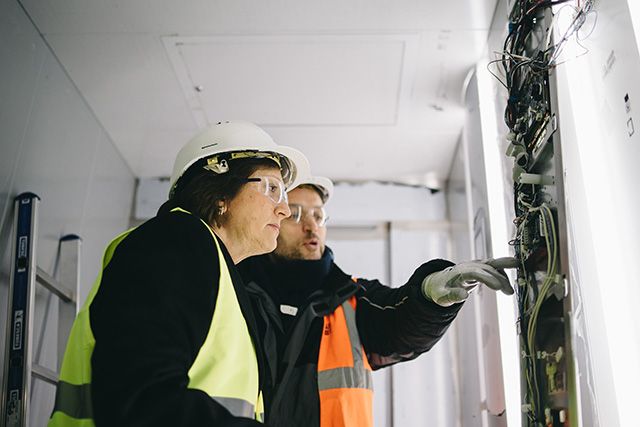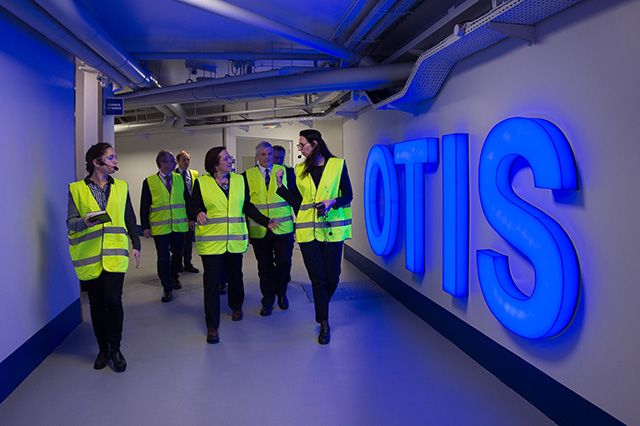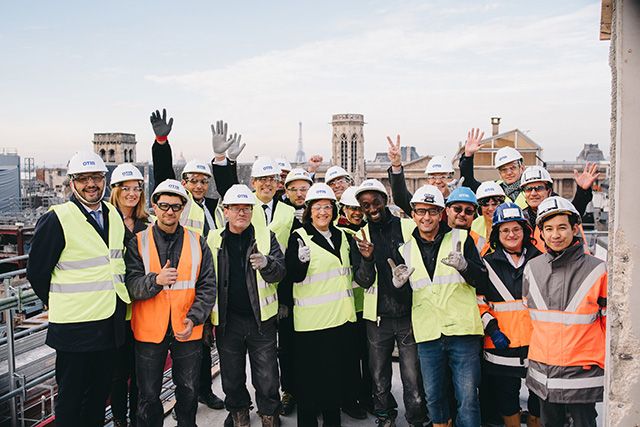
Lehigh alumna Judith (Judy) Marks '84 is President of Otis Elevator Company, a unit of United Technologies and the world’s leading manufacturer and service provider of elevators, escalators and moving walkways. Marks landed her first management job at 23 and went on to senior leadership roles at three global icons – IBM, Lockheed Martin and Siemens AG. She was serving as CEO of both Siemens USA and Dresser-Rand, a Siemens business, when recruited to run Otis in 2017. Her experience spans multiple disciplines across aerospace and defense and the data and industrial technology worlds, and she has led successful corporate development and strategic growth in emerging and mature platforms and products. Marks holds a B.S. in electrical engineering from Lehigh. She has served on the Dean’s Advisory Council and has supported several Lehigh initiatives aimed at increasing diversity among the science, technology, engineering and math disciplines.
Q: Is there a difference between leadership and management?
A: Yes. Managers guide and direct the accomplishment of work. Leadership requires vision and judgment. A leader needs to have a willing and engaged team that is aligned and empowered to achieve the objectives of the company. To me, a good leader has the ability to make decisions—and makes them. It’s someone who surrounds himself or herself with outstanding people, empowers those people and holds them accountable.
Importantly, a leader is someone who has the ability to lead through change, because change is the norm. Change can be exciting. It is for me. I see it as generally positive, even exhilarating. But it poses challenges for the people in your organization. Not everyone is comfortable with it. So a leader needs to focus on people and change management to successfully guide them from the old to the new.
Q: Does engineering prepare people for leadership roles?
A: Engineers bring a great analytical approach to problem solving and to leadership. Engineering is a strong foundation for today’s business environment. Engineers need to continue to learn to become well-rounded leaders. They need to add business and finance to their skill set. The other element is engaging with others. I think engineers can bring teams together to solve problems and innovate like no other group of people I’ve ever seen. To do that, they do need soft skills—collaboration, engagement, achieving alignment on objectives, communication. You don’t really learn those in the classroom, but only by working with others.
My engineering background has certainly played a pivotal role in my career. That’s why I encourage young women to go into engineering and the sciences. It provides an excellent foundation for business and the professions. It gives you the tools for solving problems. Without that I might not have gotten the opportunities I’ve had.
Q: Are technology companies finding enough qualified people for careers in the STEM disciplines?
A: When I talk about STEM careers, there are those you pursue at the university level and those you pursue post-high school. In today’s workforce we really do have a challenge in terms of access to what I would call digitally literate, technologically literate employees, especially in some of the craft areas, because technology permeates every job in today’s economy. At Otis we’ve got 33,000 mechanics globally who are servicing our elevators. Well, our elevators are smarter; they’re rich with data from our controllers and sensors. Our mechanics now have sophisticated tools with them. These are not just mechanical skills anymore. They are mechanical and technology skills. Other industries have similar challenges.
Q: How important is risk-taking and “getting comfortable with the uncomfortable” in early career choices? Was that challenging for you?
A: Sure. I think when you’re trained as an engineer, as I was at Lehigh, you’re taught that when you work hard enough at a problem, you can solve it. But in industry, problems have other dynamics and dimensions to them. You need to learn how to collaborate and how to get engaged. Taking risk is part of that. I advise people to calculate that they’re taking a risk and live with the consequences. But don’t take risks wildly.
Q: What should we be doing to address this need?
A: We need to raise the knowledge base of all students and future employees, as they go from K through 12 and on to community colleges or universities. Once they’re in industry, we need to provide continuous learning. One thing we at United Technologies do to encourage STEM education in the schools is to sponsor robotics competitions. For our own people, we provide funding and accessibility to getting degrees. We have programs internally to help them learn technology to make a contribution. We bring people together in communities of interests to share challenges and to learn together. It’s a whole spectrum of STEM commitment that starts with K through 12 and never ends as part of continuous learning at the company.
Q: Diversity is an important issue for you. Are technology companies having success in creating diverse workforces?
A: I think there’s been some success. There’s room for more. All companies need to address diversity. It’s the future of their business. I don’t understand why a business wouldn’t want to be able to recruit and retain from multiple communities and diverse employees. Because with diversity, you get diversity of thought. People approach things differently because they come from different backgrounds. That drives innovation and problem solving. That’s the power of diversity: different solutions, different thoughts and different voices being heard at the table.
Q: Does diversity affect the bottom line?
A: Absolutely. For example, there is growing evidence to support the business case for gender equity. Last year, the Peterson Institute and EY conducted a study that looked at nearly 22,000 publicly traded companies. They found that companies with women in at least 30 percent of leadership positions had a 6 percent higher net profit margin. That is definitely a bottom-line impact.
Q: Have you been involved in diversity?
A: Yes, both inside and outside our company, because I believe I have a responsibility. People have come before me and created an environment where I can succeed. I believe I have a responsibility to the next generation of leaders to help create an environment where they can succeed. I also make it a point to share the lessons I’ve learned with industry groups externally, and I certainly do that inside the company.
Q: Any final thoughts for people moving into leadership positions?
A: Leadership transitions are challenging, but rewarding. Here are some things that I have found helpful: trust your instincts; admit what you don’t know; listen; communicate—three times as much as you think you should; stay with what works; and take time to celebrate successes. Most of all, remember that you’re not leading a company—you’re leading people.
Interview by William Tavani



